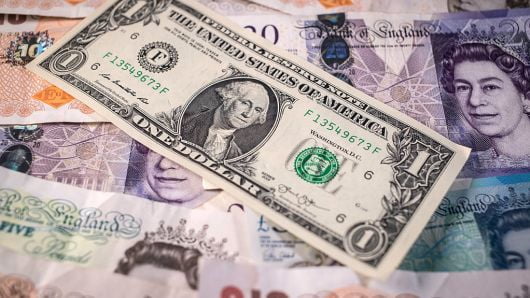The Australian dollar fell versus the greenback on Friday after a private survey showed factory activity in China shrank by the most in almost three years in January.
The Australian dollar, often considered a barometer for global risk appetite, fell 0.4 percent to $0.7246. The kiwi was at $0.6907, down 0.2 percent versus the greenback.
China’s gloomy factory readings have brought global growth worries to the fore again, which is likely to benefit safe-haven currencies such as the Japanese yen.
“Dollar/yen is expected to remain weak given a dovish Federal Reserve but we can expect a bigger move down if there is a return of risk-off sentiment,” said Sim Moh Siong, currency strategist at Bank of Singapore.
The yen was steady at 108.8 against the dollar after hitting a two-week high in the previous session.
However, broader risk sentiment still remained fairly strong after U.S. President Donald Trump said on Thursday he would meet with Chinese President Xi Jinping soon to try and seal a comprehensive trade deal as the top U.S. negotiator reported “substantial progress” in two days of high-level talks.
The dollar index, a gauge of its value versus six major peers, was steady at 95.60. The index is set to end the week in the red, after losing 0.6 percent of its value last week.
The dollar is widely expected to weaken this year as the Federal Reserve turns more cautious about further rate increases.
On Wednesday, the U.S. central bank held interest rates steady as expected but discarded pledges of “further gradual increases” in interest rates, and said it would be “patient” before making any further moves.
Trade talks between the United States and China could also have an impact on the dollar, which has acted as a safe-haven in times of uncertainty.
President Trump said he wanted a “very big” trade deal with China, but he signaled there could be delays if talks fail to meet his goals of opening the Chinese economy broadly to U.S. industry and agriculture.
Analysts say a comprehensive trade deal between the world’s two largest economies would most likely boost risk sentiment and lead to a weaker dollar.
Markets are now focusing on U.S. jobs data later on Friday. Analysts note that any weakness in the labor market and a fall in wage inflation would only reinforce the dovish outlook for the dollar this year.
The euro was flat at $1.1446 after having fallen 0.3 percent in the last session. The single currency has not managed to gain despite broader dollar weakness as growth and inflation in the euro zone remain weaker than expected.
Indeed, Jens Weidmann, the Bundesbank president and a member of the European Central Bank Governing Council, painted a bleak picture of the German economy on Thursday, saying the slump in Europe’s largest economy will last longer than initially thought.
Sterling, which is grappling with troubles of its own on uncertainty over a deal to avoid a chaotic British exit from the European Union, was flat at $1.3109. Analysts expect the British pound to remain volatile in the coming weeks.
[“source-cnbc”]





















































